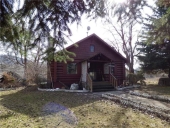posted 4 years ago
I would put a pond there as well, definitely making use of chinampas if possible, but mainly focusing on heavy feeders, so as to clean the water.
If it's the lowest point on the property, it's the point with the shortest distance to travel to replenish the aquifer. That said, there's the least amount of mineral filtration there, too.
My feeling is that in any position with water pooling and/or exiting the property, either on the surface or sub-surface, I would want to have the bottom of my system have more filtration aspects than even the rest of my system (when we build nutrient uptake systems that generate carbon in the soil and aboveground, we're essentially creating nutrient runoff filters, in those places where it's a problem). I would want to treat my system like there were theoretical particulate and water quality sensors upstream and downstream of me, judging my contribution.
But generally, yeah, why fight it? I want to do a two-pond system, myself, with a flowing watercourse for fish movement from one pond to the other, and for irrigation. I would want to figure out an efficient method of doing this, and hopefully the terrain will help me out, but essentially, I want to do a solar/wind pumped return from the bottom of the system to the top, during which it also filters and aerates the water reentering the top of the system.
I mean, the amount of land it takes up is an issue, but above a certain point, why can you have only one pond?
-CK
A human being should be able to change a diaper, plan an invasion, butcher a hog, conn a ship, design a building, write a sonnet, balance accounts, build a wall, set a bone, comfort the dying, take orders, give orders, cooperate, act alone, solve equations, analyze a new problem, pitch manure, program a computer, cook a tasty meal, fight efficiently, die gallantly. Specialization is for insects.
-Robert A. Heinlein







